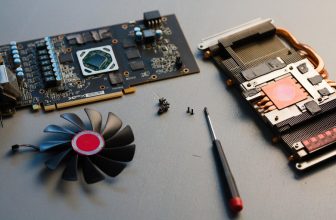
Astrophysical jets are some of the most intriguing and puzzling structures in the universe. These narrow streams of plasma are propelled out of the accretion disks surrounding black holes, neutron stars, and other compact objects, and can extend over millions of light-years. Jets emit radiation across the entire electromagnetic spectrum, from radio waves to gamma rays, providing valuable information about the underlying physical processes and the extreme environments they occur in. One of the most important mechanisms responsible for the high-energy radiation in astrophysical jets is inverse Compton scattering. In this article, we will explore what inverse Compton scattering is, how it works, and some of its most notable applications in astrophysics.
What is Inverse Compton Scattering?
Inverse Compton scattering (ICS) is a fundamental process in which a low-energy photon (such as a radio or optical photon) collides with a high-energy electron, transferring some of its energy to the electron and boosting it to a higher energy state. The resulting scattered photon has a higher energy than the original photon, and its frequency and wavelength are altered according to the energy transfer. The inverse process, Compton scattering, is the more familiar version, in which a high-energy photon (such as an X-ray or gamma-ray photon) collides with a low-energy electron, resulting in a decrease in energy and wavelength.
ICS is an important mechanism for generating high-energy radiation in astrophysical sources such as jets, pulsars, and active galactic nuclei (AGN). The electrons in these sources are typically accelerated to relativistic speeds by strong magnetic fields, shock waves, or other processes, and emit synchrotron radiation at lower energies. However, if these electrons encounter a population of low-energy photons (such as the cosmic microwave background or infrared radiation from the surrounding material), they can produce high-energy photons via ICS. This process can occur both in the source itself (internal ICS) and in the surrounding environment (external ICS).
Internal ICS in Astrophysical Jets:
One of the most compelling examples of ICS in astrophysical jets is the so-called “blazar” phenomenon. Blazars are a type of AGN with relativistic jets pointing towards Earth, and are characterized by strong and variable emission across the entire electromagnetic spectrum. The emission from blazars is thought to arise from a combination of synchrotron radiation and ICS of low-energy photons by relativistic electrons in the jet. In particular, the inverse Compton scattering of synchrotron photons by the same population of electrons can produce gamma-ray photons with energies up to several tens of GeV.
Another example of internal ICS in jets is the “Compton Dominated” or CD jets, which show an unusually high ratio of X-ray to radio emission. CD jets are thought to arise from AGN with relatively low accretion rates and low magnetic fields, resulting in less efficient synchrotron radiation and more prominent ICS emission.
External ICS in Astrophysical Jets:
External ICS can also play an important role in astrophysical jets, particularly in the interaction of the jet with its surroundings. For example, in the case of “gamma-ray bursts” (GRBs), the jets are thought to be produced by the collapse of massive stars and the resulting supernovae. The interaction of the jet with the surrounding material can produce a “reverse shock” that accelerates electrons to high energies, which can then produce gamma-ray photons via ICS with the low-energy photons from the supernova.
Another example of external ICS is the interaction of the jet with the cosmic microwave background (CMB) radiation. The CMB is a low-energy photon background that permeates the entire universe and is thought to be a remnant of the Big Bang. When the relativistic electrons in a jet encounter the CMB photons, they can produce high-energy gamma-ray photons via ICS. This process is thought to be responsible for the “GeV excess” observed in some blazars, where there is an excess of gamma-ray emission at energies around a few GeV.
- Xbox Game Pass Ultimate 2023 in the World
- What are Google Cloud Data Centers?
- Why Steam Deck Is one of the foremost vital PC gaming recreation Moments in Years
- Intel Core i5-13500 Latest Review
- Graphics Cards and GPU Reviews
Inverse Compton scattering is a fundamental process in astrophysical jets, playing a crucial role in generating high-energy radiation across the electromagnetic spectrum. The interaction of high-energy electrons with low-energy photons via ICS can produce gamma-ray photons with energies up to several tens of GeV, which can be observed and studied using a variety of telescopes and instruments. Internal ICS in jets can lead to the emission from blazars and CD jets, while external ICS can occur in the interaction of the jet with its surroundings, such as in the case of GRBs and the CMB. The study of ICS in astrophysical jets is a fascinating and rapidly evolving field, with the potential to shed light on some of the most extreme and mysterious phenomena in the universe.
- Does gpu fan always spin? | 2024 - December 27, 2023
- GPU Fan Rotation, Save Energy | The Truth About 2024 - December 25, 2023
- How to Increase GPU Fan Speed | Ultimate Guide! 2024 - December 19, 2023







